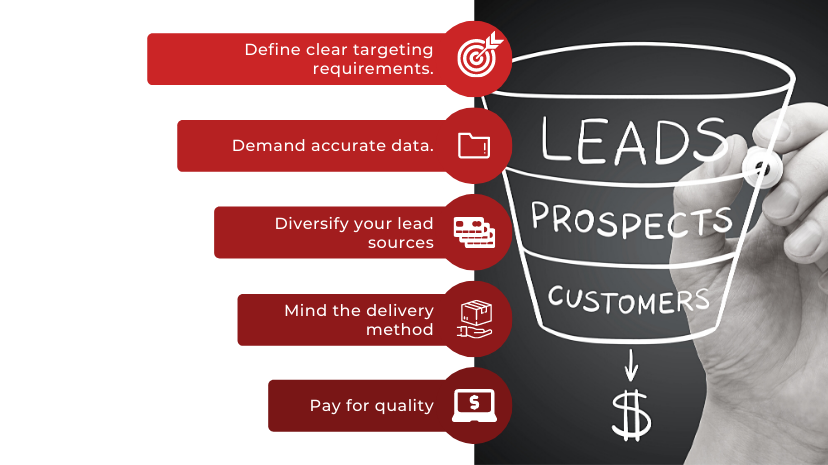
Now once you’ve defined your ROI goals, you need to set up a quality assurance process — a way to ensure that purchased leads are qualified, accurate, and ready for your sales team.
1. Define clear targeting requirements
There are a number of ways to define targeting requirements, depending on the kind of leads you want to buy Firmographics: Basic criteria such as industry, company size, job title, and geographic location BANT: Budget, authority, timeline, need; don’t expect every lead to match all four Intent: Level of interest or purchase intent (based on which stage of the buying process they’re in)
2. Demand accurate data.
An estimated forty percent of all generated leads have “poor data quality,” which is marked by duplicate or invalid entries, failed email address or phone number validation, and blank form fields. Make sure your lead provider has high standards for data accuracy, the resources to back them up, and a return policy to keep them accountable.

3. Define clear targeting requirements
There’s a lot of debate in the industry about the merits of inbound vs outbound demand generation, and research galore to support each side of the argument. Marketing has always been about balance. If you focus all of your efforts on one side of distribution, you may miss out on an entire audience —or half the market — depending on how you think of it.
4. Mind the delivery method.
The lead provider will deliver leads directly to your CRM database. Salespeople can view profiles in their native system, run reports, pull leads into existing workflows, and everyone is happy. If you use a lesser-known CRM, you may need to import leads through an API. But again, this should be straightforward.
5. Pay for quality.
You get what you pay for. A higher cost per lead may limit the volume you can afford, but the leads you do get will be lower in the funnel, actively pursuing products like yours and ready to make a decision.